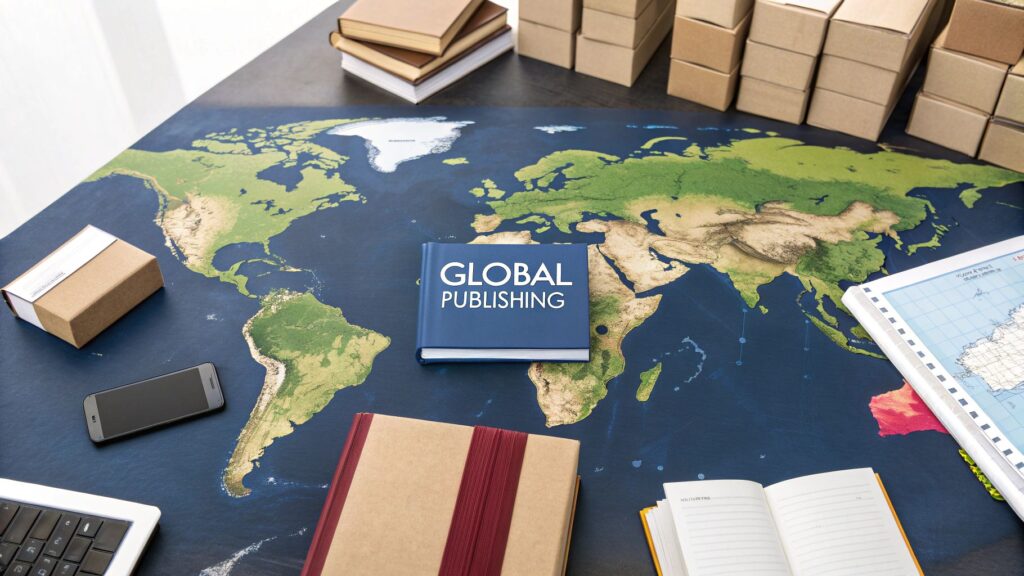So, you've written a book. The next big question is, where will it go? While launching in your home country is a huge achievement, the real adventure begins when you look beyond your own borders. Taking your book global means navigating a fascinating web of international rights, distribution networks, and marketing tactics to connect with readers worldwide.
Your Guide To The Global Publishing Landscape
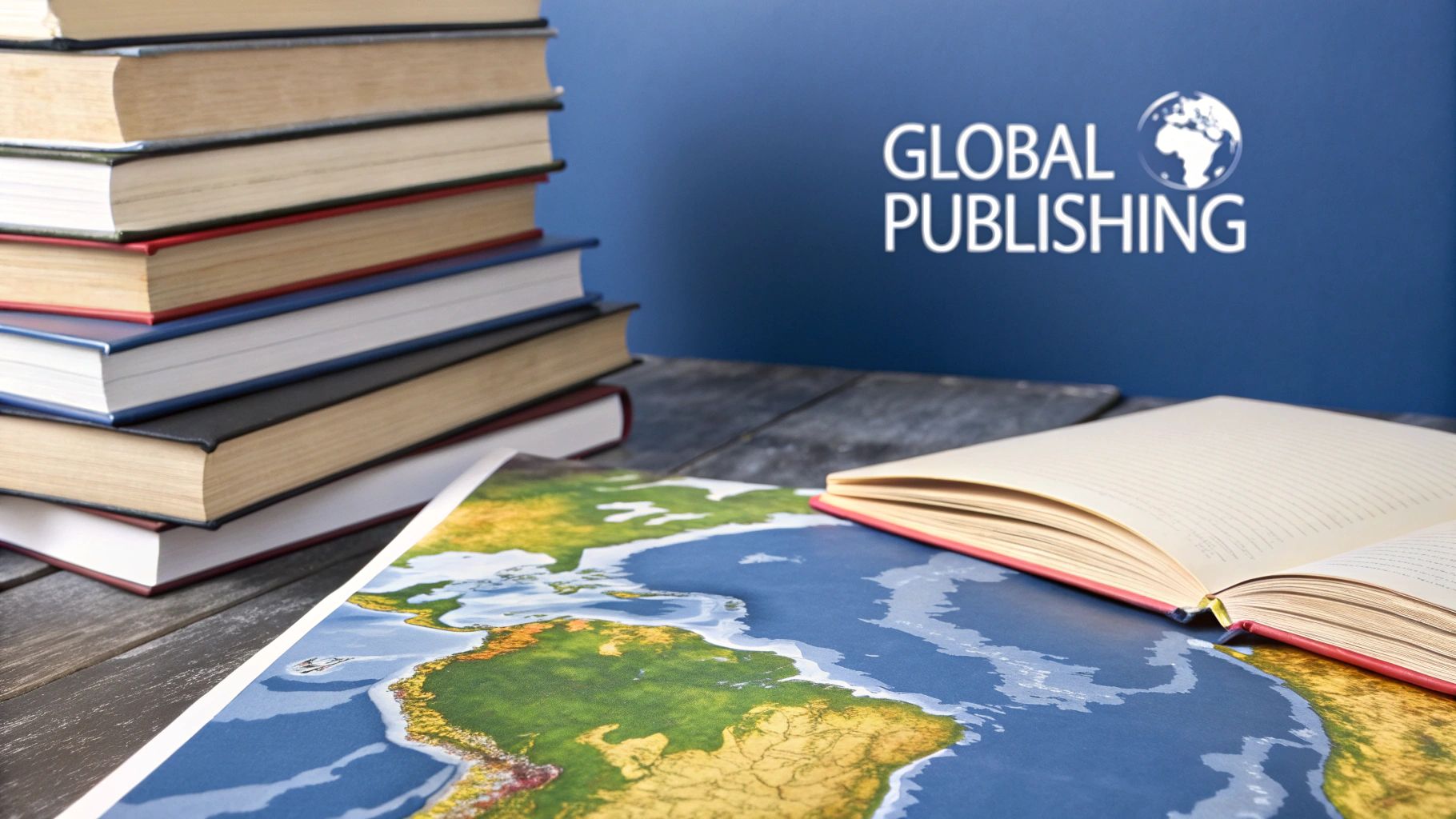
Picture your book on a shelf in a Tokyo bookstore, downloaded onto a tablet in Berlin, or discussed in a book club in Buenos Aires. That’s the power of global book publishing: turning your story into a worldwide conversation. Getting there, however, is more than just a simple upload.
Think of it as building an international supply chain for your creative work. Your manuscript is the product, and you need a strategy to get it from your desk into the hands of readers overseas. This requires a solid map of the territory and knowing the key players who control the shipping lanes—from big-name traditional publishers to the incredibly accessible self-publishing platforms that have leveled the playing field for authors everywhere.
Understanding The Market's Scale
The global book market isn't just big; it's a behemoth and it's still growing. Valued at roughly US$93.8 billion in 2024, the industry is on track to hit US$108.8 billion by 2030. This isn't just a random spike—it's fueled by rising literacy rates, digital access, and a hunger for diverse stories.
To give you some perspective, the United States is the largest single market, clocking in at around US$25.3 billion. But keep an eye on emerging markets. China’s book industry, for instance, is projected to soar to US$21.1 billion by 2030. You can find a deeper analysis of these market trends and see what they mean for authors like you.
The sheer size of the market might feel intimidating, but it's really just a network of different pathways. Your job is to find the right one for your book.
- Traditional Publishing: The giants of the industry. These houses have entire departments dedicated to selling international rights. They strike deals with foreign publishers who handle the translation, printing, and local distribution.
- Hybrid Publishing: This model is a fantastic middle ground. Authors contribute to the cost of production, and a company like BarkerBooks handles the professional editing, design, and global distribution. You get more creative control and much better royalty rates.
- Self-Publishing Platforms: Game-changers like Amazon KDP have made it possible for any author to go global. You can upload your manuscript and, almost instantly, make it available as an ebook or print-on-demand book in dozens of countries.
A successful global strategy isn't about picking just one path. It's about figuring out which combination of channels fits your specific goals, genre, and budget. The right mix can be the difference between being a local favorite and becoming a household name around the world.
Key Global Book Market Growth Projections
The following table breaks down the anticipated growth in major publishing markets. It's clear that while established regions remain strong, the most dramatic expansion is happening in developing economies, creating exciting new opportunities for authors to find untapped audiences.
| Region/Country | Projected Market Size by 2030 (USD) | Forecasted CAGR (2024-2030) |
|---|---|---|
| China | $21.1 Billion | 5.9% |
| India | $4.5 Billion | 7.2% |
| Brazil | $2.8 Billion | 4.8% |
| Germany | $10.2 Billion | 1.5% |
| United States | $27.5 Billion | 1.3% |
These numbers tell a powerful story: the global appetite for books is only getting stronger. By understanding the market dynamics and the distribution channels at your disposal, you can position your work to be part of that growth.
Ultimately, getting a handle on the global publishing ecosystem is the first critical step. It gives you the knowledge to make smart, informed decisions about how your book travels—transforming it from a file on your computer into a story that makes a lasting impact far beyond your own backyard.
Choosing Your Global Distribution Channels
You’ve done the hard work. The book is written, edited, and has a killer cover. Now for the million-dollar question: how do you get your book into the hands of a reader in another country? This is where distribution comes into play—it's the entire network that moves your book from a file on your laptop to a physical or digital storefront anywhere in the world.
Getting your distribution strategy right is one of the most critical decisions you'll make. Think of it like choosing how to ship a product. You could use a massive freight company that has relationships with every major port, or you could opt for a nimble courier that delivers straight to the customer's door. Each has its own costs, benefits, and reach. The trick is to understand your options and build a plan that truly fits your goals.
This image offers a great high-level view of where the major market shares in global publishing currently lie.
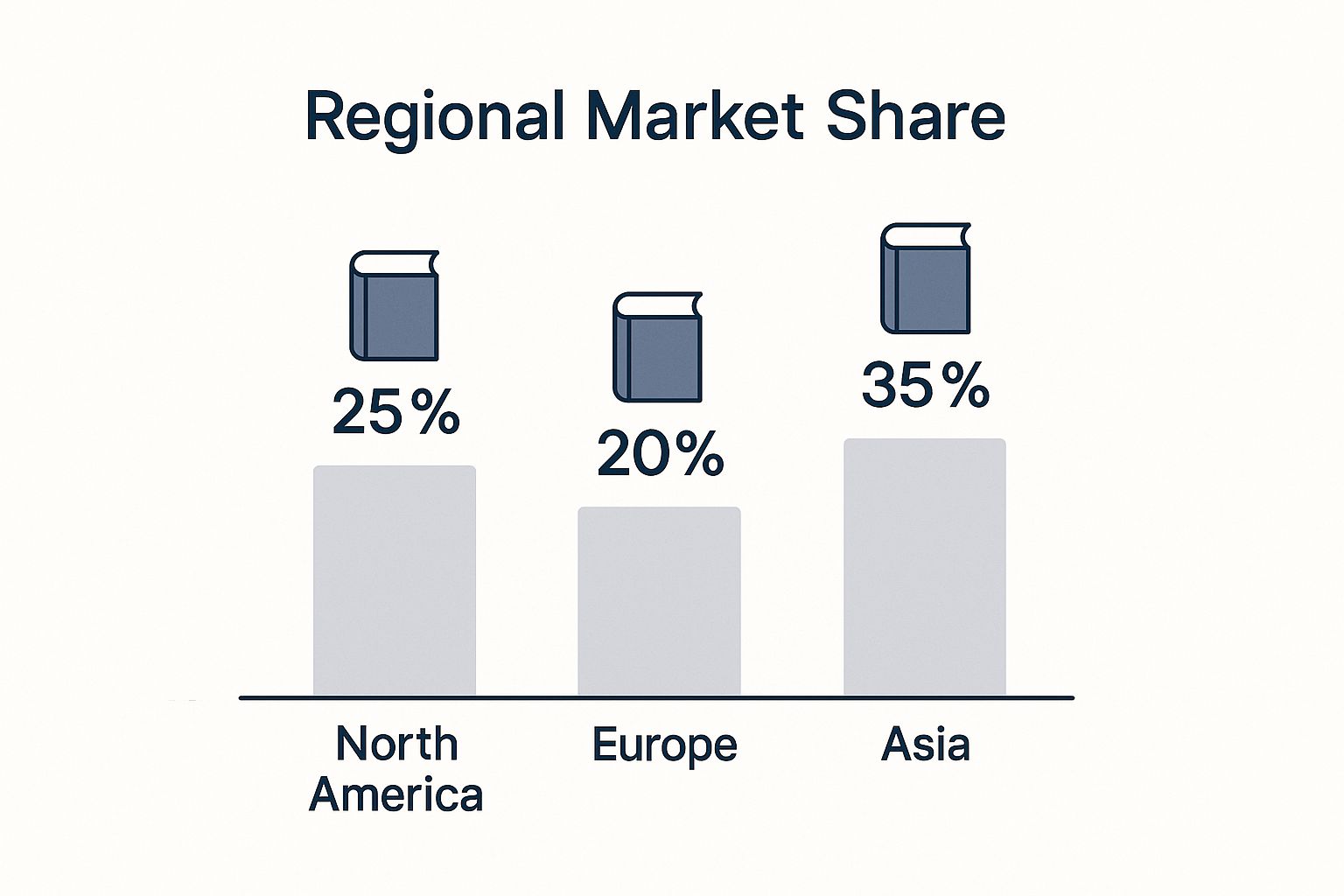
As you can see, North America and Europe are still powerhouses, but Asia represents the single largest regional market. This highlights the incredible opportunities waiting for authors who think beyond their home borders.
The Rise of Print-on-Demand (POD)
For most independent authors, Print-on-Demand (POD) has been a complete game-changer for global distribution. Instead of paying for a massive print run of thousands of books and wrestling with warehouse logistics, POD services print a single book only when a customer actually orders it. This approach massively lowers your financial risk.
Industry titans like Amazon KDP and IngramSpark dominate this space. When someone in Germany or Japan buys your paperback on Amazon, a copy is printed at a nearby facility and shipped directly to them. You don't have to touch international shipping, customs forms, or inventory management. It’s this incredible accessibility that has fueled so much of the industry's recent growth.
The entire book publishing market is projected to hit USD 103.7 billion in 2025 and is expected to climb to USD 149.2 billion by 2035. This boom is largely driven by digital-first models like POD and the explosion in self-publishing.
Traditional Distribution vs. Direct Sales
Beyond POD, you've got two other main paths. On one side, you have traditional distributors. These are the gatekeepers to physical bookstores. They buy books in bulk from publishers, warehouse them, and then use their sales teams to get those books onto the shelves of retailers like Barnes & Noble. This route offers a ton of prestige and visibility, but it's a tough door to open for new authors without a traditional publishing deal.
On the other end of the spectrum is direct sales from your own website. This path gives you the highest royalty on every sale and lets you build a direct relationship with your readers. The trade-off? You're responsible for everything: marketing, payment processing, and fulfillment. Managing international orders this way can quickly become a full-time job.
Key Takeaway: The smartest distribution strategy usually isn't about choosing one path, but blending them. You can use Amazon KDP for its unmatched global reach, add IngramSpark to get into bookstores and libraries that KDP doesn't serve, and sell directly to your most loyal fans through your website.
Ebook Aggregators: Your Digital Multipliers
So, what about ebooks? You can certainly upload your file directly to major retailers like Amazon Kindle and Apple Books. But to really maximize your digital reach, ebook aggregators are an incredibly powerful tool.
Services like Draft2Digital or Smashwords act as a "one-to-many" distribution hub. You upload your ebook once, and they send it out to dozens—sometimes hundreds—of smaller digital stores and library services across the globe. They are invaluable for tapping into niche markets you might have never found otherwise. For a small fee or a cut of your royalties, they handle all the complex formatting and distribution work, saving you a ton of time.
Thinking beyond the book itself, some authors even explore content syndication platforms to distribute articles or excerpts, which is a great way to broaden their digital footprint and attract new readers.
A Comparison of Global Distribution Models
To help you visualize the different paths, here’s a breakdown of the most common distribution models. Thinking through which one aligns best with your budget, time, and goals is a foundational step.
| Distribution Model | Key Providers | Best For | Primary Benefit | Key Challenge |
|---|---|---|---|---|
| Print-on-Demand (POD) | Amazon KDP, IngramSpark | Independent authors, niche books, backlist titles | No upfront inventory cost; global reach with local printing | Lower per-unit profit; less control over print quality |
| Traditional Distribution | Ingram, Baker & Taylor | Traditionally published authors; high-volume sellers | Access to physical bookstore shelves; large-scale logistics | Very difficult to access without a publisher; requires large print runs |
| Direct-to-Consumer (D2C) | Your own website (e.g., Shopify) | Authors with a strong brand and existing audience | Highest royalty rates; direct reader relationship and data | You handle all marketing, shipping, and customer service |
| Ebook Aggregation | Draft2Digital, Smashwords | Authors wanting wide digital reach beyond major retailers | Saves time; access to hundreds of smaller stores & libraries | A portion of royalties is taken by the aggregator |
Ultimately, choosing the right distribution mix is a core part of building a successful global publishing business. For a deeper dive, our guide on professional book distribution services can help you weigh the pros and cons of each option. By carefully selecting your channels, you give your book the best possible chance to find its audience, no matter where in the world they live.
Managing Your Legal and Financial Obligations
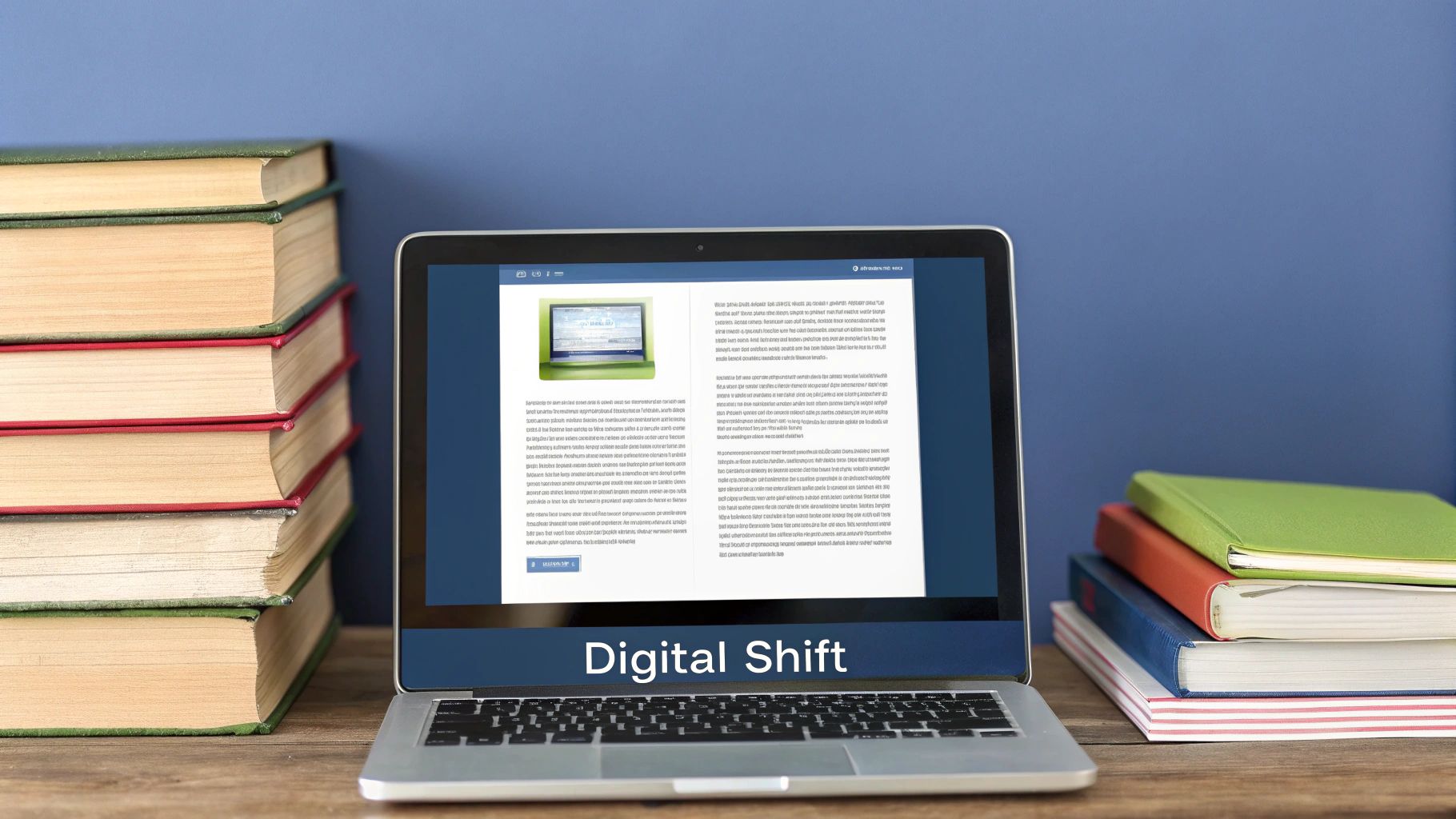
Taking your book global is an incredibly exciting step, but it also means navigating a new world of rules and regulations. While the legal and financial side of things can seem daunting at first, it's really just a matter of getting your ducks in a row. It’s all about protecting your work, your income, and your own peace of mind.
Think of it as laying the groundwork for your international author career. You wouldn't build a house without a proper foundation and permits, right? In the same way, you shouldn’t launch your book worldwide without sorting out the key identifiers, copyrights, and tax details that form your legal framework. Getting this right from the beginning will save you from a world of trouble later on.
Understanding Your Book's Global Passport: The ISBN
Every single book intended for sale needs an International Standard Book Number, or ISBN. This 13-digit code is your book's unique ID across the entire planet—it’s essentially its passport. This number is how distributors, bookstores, and libraries track your book for orders, inventory, and sales reports.
A common question I hear is whether a new ISBN is needed for every country. The answer is a simple no; an ISBN is universal. However, you absolutely must have a unique ISBN for each format of your book.
- Paperback Edition: Gets its own ISBN.
- Hardcover Edition: Needs a different ISBN than the paperback.
- Ebook Version: Requires a separate ISBN.
- Audiobook Format: Also needs its own unique ISBN.
If you ever publish a translated version, that new edition is also considered a unique product and will need its own ISBN. This system is what keeps the global supply chain organized and ensures every version of your work is tracked correctly. For a full breakdown, our guide on how to get an ISBN for my book walks you through all the necessary steps.
Protecting Your Intellectual Property Worldwide
Your book is so much more than words on a page—it's your intellectual property. The good news is that you don't have to go through the hassle of filing for copyright in every single country you sell in. International treaties have already done the heavy lifting.
The Berne Convention is a crucial international agreement that governs copyright, signed by over 179 countries. If your country is a member, your work automatically receives the same copyright protection in all other member countries as it does at home. It’s your automatic, global shield.
While copyright protects the content inside your book, the title itself is a different story. If you’re building a brand or a book series, digging into the intricacies of trademarking a book title can be a smart move to safeguard your work.
Navigating International Taxes and Royalties
For many authors, this is the most intimidating part of going global: taxes on foreign royalties. It's a valid concern. When your book sells in another country, that nation's government might withhold a portion of your earnings for taxes.
For instance, any author who isn't a US citizen but earns royalties from sales in the United States has to deal with US tax withholding. The standard rate is a steep 30%, which can take a huge chunk out of your profits.
Thankfully, many countries have tax treaties with the US that can slash this withholding rate, often all the way down to 0%. To claim this benefit, you need to file a specific form with your distributor, like Amazon KDP.
- For Non-US Authors: You'll typically need to fill out a W-8BEN form. This document certifies your foreign status and allows you to claim any tax treaty benefits your country has with the US.
Submitting this form correctly instructs the distributor not to take that default 30% from your US-based royalties. It’s a vital step to make sure you get paid what you’ve earned. Most major platforms also streamline payments from multiple currencies, making it easier to receive your global earnings. A little time spent on these financial formalities is absolutely essential for a profitable career as an international author.
Marketing Your Book to a Global Audience
Getting your book listed on international sites is just the first step. A brilliant book won't just find its way into the hands of readers in another country by magic. Once your distribution is set up, the real work begins: you need a smart marketing plan to connect your story with people across different cultures and economies.
Think of it like this: if you were launching a new snack, you wouldn't use the exact same ad campaign in Tokyo as you would in Toronto, right? The same logic applies to books. A one-size-fits-all approach to marketing is a recipe for disappointment. Real success comes from getting to know your potential reader markets, tweaking your message so it clicks with them, and using the right channels to get their attention.
Research and Adapt Your Message
Before you spend a single dollar on international advertising, you have to understand the new playing field. What’s a bestseller in the US or UK might completely fall flat in Germany or Brazil. A great starting point is to research the top-selling books in your genre within the countries you're targeting. Take a close look at their covers, read their descriptions, and check out their prices.
This initial homework helps you get a feel for what local readers expect. A cover that screams "thriller" in one country might look like a "romance" novel in another. You may need to make subtle adjustments to your marketing copy or even your book's blurb to fit in with cultural norms. For a deeper look at the fundamentals, our guide on book marketing strategies is a great resource.
Beyond the book itself, a solid online presence is non-negotiable. An author website or blog acts as your home base for readers around the world. It’s also worth learning about proven strategies for increasing organic website traffic to draw in potential readers from every corner of the globe.
Smart Pricing and Targeted Advertising
Getting your pricing right for different economies is one of the most powerful marketing moves you can make. A common mistake is to simply convert your home currency price directly. Don't do that. Instead, set a price that's competitive within the local market. Platforms like Amazon KDP make this incredibly easy by letting you set specific prices for each major country.
For example, a $9.99 ebook is pretty standard in the US, but that price could be a major barrier in a market like India. Dropping the price to something like ₹149 (which is about $1.80) could dramatically boost your sales volume.
Once your pricing is dialed in, you can use targeted ads to zero in on your new audience. Amazon Ads is a fantastic tool for this, allowing you to run campaigns that specifically target readers in countries like:
- United Kingdom
- Germany
- France
- Spain
- Japan
- Australia
Your ads can show up directly on the Amazon store pages where your ideal customers are already browsing, putting your book right in front of them when they're ready to buy.
The Critical Decision of Translation
The ultimate move in global marketing is, of course, translation. But this is a huge investment, so it needs to be treated as a calculated business decision, not a creative whim. Before you even think about translating, your book needs a proven track record of sales in its original language. That success is your proof that there’s a real market for your story.
If the numbers look good, start researching which languages offer the best potential return on investment. For English books, German, French, and Spanish are often the top contenders because they have large, established communities of active readers.
Finding the right translator is everything. You're looking for someone who is not only a native speaker of the target language but who also has deep experience in your specific genre. A great translator does more than just swap words—they capture the cultural nuances, the humor, and the idioms to make sure the story feels authentic to a brand new audience. You absolutely must budget for both a high-quality translator and a separate proofreader to get a professional-grade book that can actually compete.
How Technology Is Reshaping Global Publishing
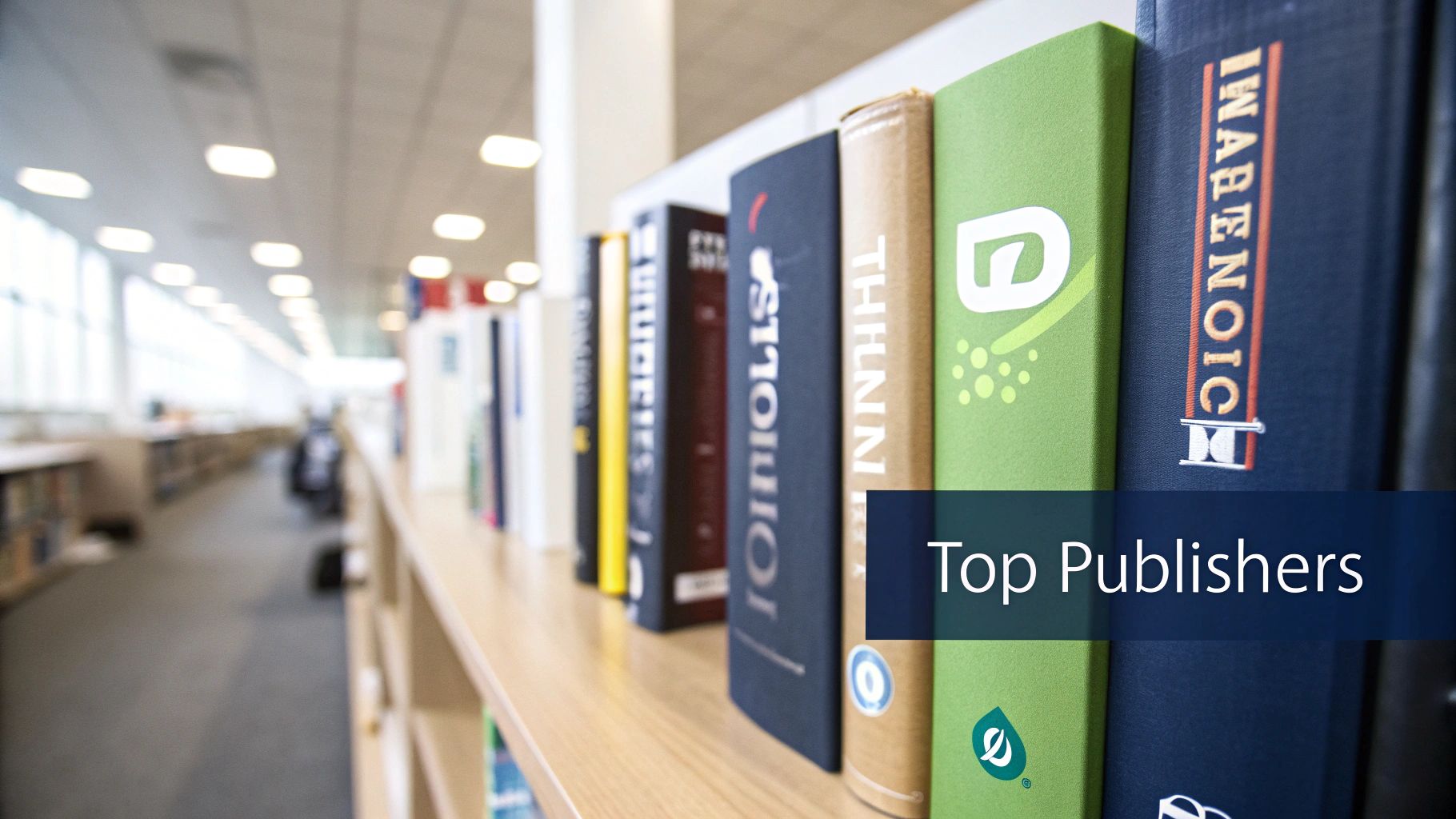
It’s no exaggeration to say that technology has completely upended the global book publishing industry. It's not just a handy tool anymore; it's the very engine of change. For authors, this is a massive shift, prying open doors that were once bolted shut by traditional gatekeepers.
We're seeing a fundamental rewiring of how a book travels from an initial idea to a reader's hands. The old model of relying exclusively on a publisher's say-so and internal machine is fading. Today, authors have a whole new toolkit that gives them direct access to readers and unprecedented control over their careers.
AI as Your Creative Co-Pilot
Artificial intelligence, in particular, has quickly become an author's secret weapon. It’s not about replacing human creativity—not by a long shot. Think of it more like a co-pilot, handling the tedious, technical grunt work so you can stay focused on the magic of storytelling.
This partnership is making the entire publishing journey smoother. Authors are now using AI for tasks that used to eat up time and money:
- Manuscript Editing: AI tools can catch grammar hiccups and consistency issues, giving your manuscript a solid polish before it ever reaches a human editor.
- Cover Design: Need a starting point? AI can whip up a dozen cover concepts based on your genre, giving you a strong visual direction to build on.
- Marketing Copy: It can generate compelling ad copy, social media updates, and book blurbs that speak directly to your target audience.
By taking over these tasks, AI gives you back your most precious resources: time and creative energy. You can get a more professional book to market faster and for a fraction of the traditional cost.
This isn't just a small trend. It's a huge driver of the industry's growth. Reports project the global publishing market will expand by USD 18.9 million between 2025 and 2029, and a big piece of that pie is fueled by self-published authors leaning into new tech. You can read more about how AI is impacting market trends to see just how deep these changes run.
The Unstoppable Rise of Audiobooks
Another game-changer has been the explosion of audiobooks. What started as a niche product for long-haul truckers is now a mainstream juggernaut. Millions of people are listening while commuting, working out, or doing chores, creating an entirely new and lucrative market for authors.
Platforms like Amazon's ACX (Audiobook Creation Exchange) have leveled the playing field, making production accessible for just about anyone. It connects authors with professional narrators and handles the distribution to giants like Audible and Apple Books, all with surprising ease.
Data-Driven Decisions for Smarter Publishing
Perhaps the most powerful shift of all is the access to real-time data. In the past, sales information was a closely guarded secret, trickling down from the publisher months after the fact. Now, platforms like Amazon KDP give you a dashboard showing who is buying your books, where they live, and how they found you.
This kind of information is pure gold. It takes the guesswork out of publishing. Instead of flying blind, you can make sharp, informed decisions about your next book, your marketing spend, and your overall strategy. It’s about building a direct, authentic connection with your readers and giving your work the absolute best shot at success on a global stage.
Common Questions About Global Book Publishing
Taking your book global is exciting, but it's natural to have a few questions swirling around. Let's tackle some of the most common ones I hear from authors, breaking down the process so you can move forward with confidence and sidestep those rookie mistakes.
Do I Need a Different ISBN for Each Country?
Thankfully, no. You don’t need a separate ISBN for every single country your book sells in. An ISBN is a universal identifier that’s recognized worldwide. Think of it as your book’s international passport—one is all you need for its global journey.
What you do need, however, is a unique ISBN for each format of your book. Your paperback, hardcover, ebook, and audiobook are all considered different products in the eyes of the industry. Each one needs its own distinct ISBN so distributors and retailers can track it properly. The same goes for any translated edition; it’s a new product and gets its own ISBN.
How Do I Get Paid Royalties from Other Countries?
This part is much less complicated than it seems. The major distribution platforms you’ll likely use, like Amazon KDP, IngramSpark, and Draft2Digital, handle the heavy lifting for you. They consolidate all your global sales and manage the currency conversions, paying you directly in your home currency.
The most critical step on your end is getting the tax paperwork right. For most authors outside the US who sell there, this means filling out the W-8BEN form. This is your key to taking advantage of any tax treaties between your country and the United States. In many cases, it can reduce the tax withholding on your American royalties all the way down to 0%.
Don't skip this step! Without that form, you're looking at a default 30% withholding on all your US-based sales. It’s a few minutes of paperwork that ensures you actually keep the income you've earned from your international readers.
Should I Translate My Book into Other Languages?
This is a big one. Translation is a serious investment, and it really should be treated as a strategic business decision, not just a whim. My advice is always the same: don't even think about translation until your book has a proven track record of strong sales in its original language. Your success at home is the best predictor of its potential abroad.
If your book is already a solid performer, start by researching markets where your genre is flying off the shelves. For English-language books, some of the highest-demand languages are often German, French, and Spanish. But only pull the trigger if you have the budget for both a high-quality translator who understands your genre and a separate proofreader to polish the final manuscript.
Can I Set Different Prices in Different Countries?
Yes, and you absolutely should! This is one of the most powerful levers you can pull to boost your international sales. Platforms like Amazon KDP give you the control to set specific list prices for each major marketplace, like the UK, Germany, Japan, and Australia.
Resist the urge to just use a currency converter on your domestic price. That's a huge missed opportunity. Instead, research what similar books sell for in that specific country and price your book to be competitive in that local market. Adjusting your price to meet local reader expectations can make a massive difference in your sales.
Ready to take your book from manuscript to global bestseller? The team at BarkerBooks has helped over 7,500 authors reach readers in more than 91 countries. We handle everything from professional editing and cover design to worldwide distribution and targeted marketing. See how we can help you achieve your publishing dreams.
